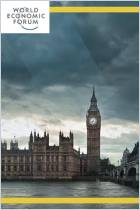Зарегистрируйтесь на getAbstract, чтобы получить доступ к этому краткому изложению.

Зарегистрируйтесь на getAbstract, чтобы получить доступ к этому краткому изложению.
Yochai Benkler
From the Imagined Community to the Practice Community
Barcelona Metropolis, 2019
Что внутри?
Cities can provide people with a sense of belonging in a way national governments can’t.
Recommendation
Globalization has led to greater economic prosperity and political freedom, but it has also eroded the power of national governments and the social cohesion essential to maintaining national communities. Consequently, the 2010s have seen a rise of ethnic and economic nationalism in liberal democracies around the world. For Yochai Benkler, however, it doesn’t have to be one or the other. He argues that cities can play a unique role in providing people with a sense of community and belonging while citizens can continue to enjoy the political freedoms of liberal democracy. His vision of participatory urban communities will inspire city dwellers everywhere.
Summary
About the Author
Yochai Benkler lectures on the law at Harvard University and is co-director of its Berkman Klein Center for Internet & Society.


















Comment on this summary